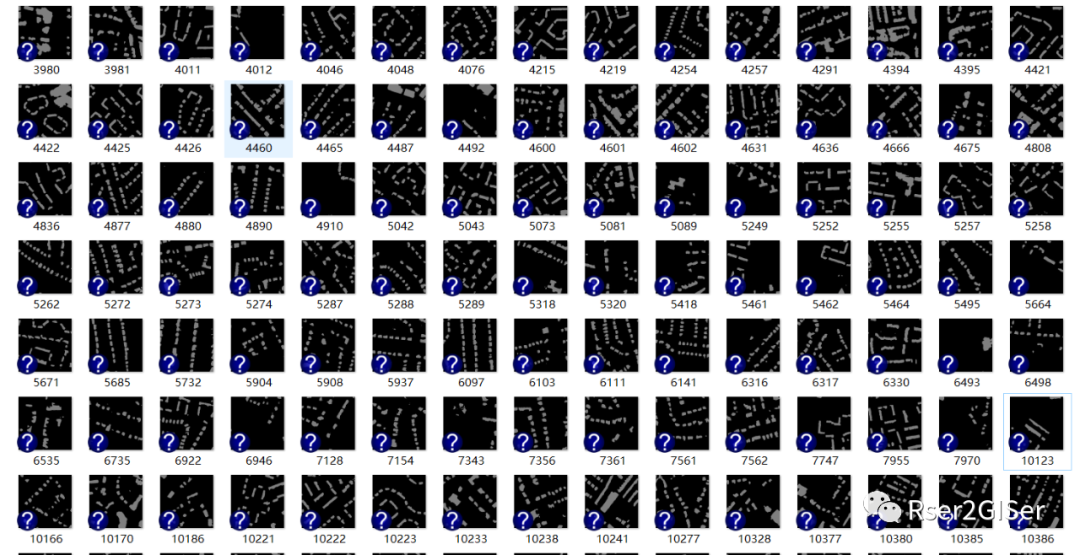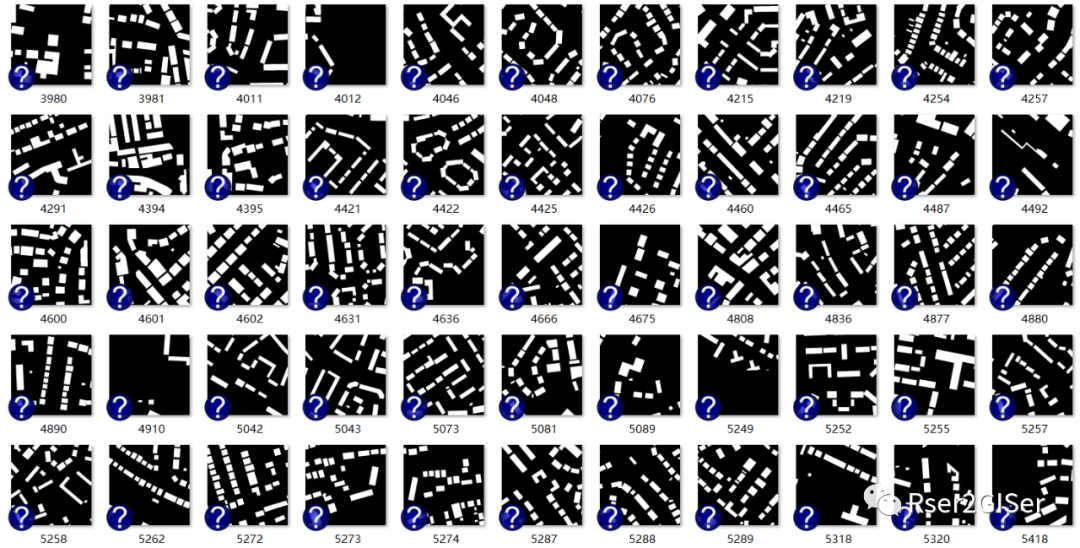真实情况 | 预测结果 | |
| 正例 | 反例 | |
| 正例 | TP(真正例) | FN(假反例) |
| 反例 | FP(假正例) | TN(真反例) |
查准率(
这个有点弯弯绕,一般有直接定义好的 function,直接调用即可.
对于预测多个建筑结果不连续无法拼接成一幅图像的时候,这时候这个任务就变成了多个二分类问题,对于多个二分类问题,计算精度的时候有两种方法,先将各个分类结果的混淆矩阵求平均成为一个混淆矩阵,然后再计算
或者也可以先求出各个精度指标的平均数然后再求出这这三个参数,记为:
现在我自己有两个文件,一个是 predict 的文件,另一个是所谓的 ground_truth,算 IOU、P、R、F1,accuracy 等等参数,当然这个是个二分类问题,而我只求建筑的 IOU,可以直接认为 $IOU=mIou$.


这里的文件由于文件名是用同样的裁剪代码裁出来的,掩膜的位置也是相同的,同时经过前期的一些条件的筛选,所有文件名也是一样的,然后就可以算
from PIL import Image
import matplotlib.pyplot as plt
import numpy as np
import os
import glob
from sklearn import metrics
from sklearn.metrics import jaccard_similarity_score
import csv
def caculate_IOU(predict_dir,predict_name,ground_truth_dir,ground_truth_name):
"""
计算交并比
参数:输入图像 和 真实图像
"""
prdict_image = Image.open(os.path.join(predict_dir,predict_name))
true_mask_image = Image.open(os.path.join(ground_truth_dir,ground_truth_name))
# PIL 转成矩阵
predict_array = np.array(prdict_image)
true_mask_array = np.array(true_mask_image)
prdict_image.close()
true_mask_image.close()
#转 0-1 二值图像
predict_array[np.where(predict_array == 127)] = 1
true_mask_array[np.where(true_mask_array==255)] = 1
#求交集和并集
intersection = np.logical_and(predict_array==1,true_mask_array==1)
union_array = np.logical_or(predict_array==1,true_mask_array==1)
IOU = np.sum(intersection) / np.sum(union_array)
return IOU
def caculate_index(predict_dir,predict_name,ground_truth_dir,ground_truth_name):
"""
计算 accuracy.
"""
prdict_image = Image.open(os.path.join(predict_dir,predict_name))
true_mask_image = Image.open(os.path.join(ground_truth_dir,ground_truth_name))
predict_array = np.array(prdict_image)
true_mask_array = np.array(true_mask_image)
prdict_image.close()
true_mask_image.close()
#转 0-1 二值图像
predict_array[np.where(predict_array == 127)] = 1
true_mask_array[np.where(true_mask_array==255)] = 1
#转 list
predict_array = predict_array.flatten()
true_mask_array = true_mask_array.flatten()
predict_list = predict_array.tolist()
true_mask_list = true_mask_array.tolist()
#返回精度指标,精度,
accuracy = metrics.accuracy_score(true_mask_list,predict_list)
precision = metrics.precision_score(true_mask_list,predict_list)
recall = metrics.recall_score(true_mask_list, predict_list)
F1 = metrics.f1_score(true_mask_list, predict_list)
return [accuracy,precision,recall,F1]
if __name__== '__main__' :
true_mask_dir = './ref_dir'
predict_dir = './predict_dir'
true_mask_files = os.listdir(true_mask_dir)
predict_files = os.listdir(predict_dir)
true_mask_files.sort(key = lambda x:int(x[:-4]))
predict_files.sort(key = lambda x:int(x[:-4]))
#Initialize
IOU,accuracy,precision,recall,F1 = 0,0,0,0,0
for i in range(len(true_mask_files)):
predict_name = predict_files[i]
ground_truth_name = true_mask_files[i]
#计算 IOU 的和
IOU += caculate_IOU(predict_dir,predict_name,true_mask_dir,ground_truth_name)
index_matrix = caculate_index(predict_dir,predict_name,true_mask_dir,ground_truth_name)
accuracy += index_matrix[0]
precision += index_matrix[1]
recall += index_matrix[2]
F1 += index_matrix[3]
# 相当于 macro-index
# print(IOU/len(true_mask_files))
# print(accuracy/len(true_mask_files),precision/len(true_mask_files),recall/len(true_mask_files),F1/len(true_mask_files))复制
IOU 好像没找到 sklearn 的函数,就自己手撕了一下,反正就是交集除以一个并集,还是比较简单的,然后就是用 sklearn 里面的 metrics.accuracy_score
、metrics.precision_score
、metrics.recall_score
、metrics.f1_score
算一下,就是需要把 PIL 读取的影像变成一个 list。中途需要用 np.array.flatten
铺平,然后转 list,然后累加求一个平均值。可以 print
出来,也可以用一个 panda 写出 csv,其实也可以直接写一个 function 转化成 LaTeX 的表格的形式,怎么快怎么来,慢慢地模块化。
今天还在和同门的同学在讨论,这个 coding 的问题,讲道理,我的 coding 基础相比于计算机同学来说还是比较弱的,我很多东西也要查,但是我觉得吧...看 Python 的基础课真的不要花太多的时间,什么 B 站黑马,小甲鱼的,有一个实际目的驱动写个代码,再写个笔记,用多了也就习惯了,当然如果大学有时间能系统的学还是挺好的,等到了 post-..., 效率为王,结果为证,并没有那么多探索的时间,如何快速得出结果才是最为重要的。
之前录的一个 QGIS 下影像裁剪的视频放 B 站上,就只是像仓库一样存储着,竟然有个人问我为什么地图转栅格?问我怎么知道影像有偏移?然后用一种独特的口气说我啥都知道,我最厉害。我就奇了怪了,我就是无聊放个视频做仓库,何必酸我。我当时也就回他,要的就是栅格,偏移不偏移自己不知道吗,我也说他没必要酸我。我就觉得很抽象了。我又没义务解答你的问题,你自己态度有问题,还不知道去探索,怪我太刻薄了。
听会儿远方的风解解乏...睡觉...






